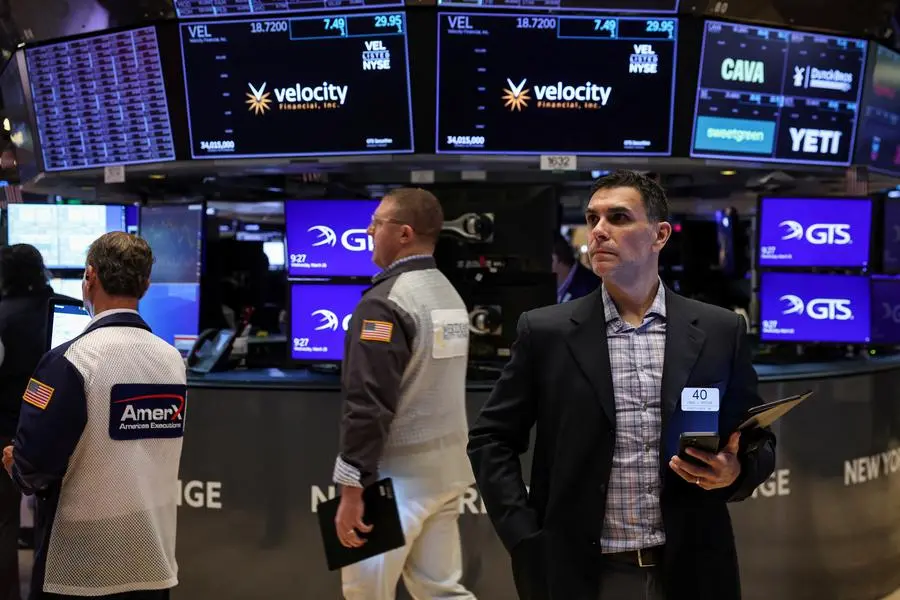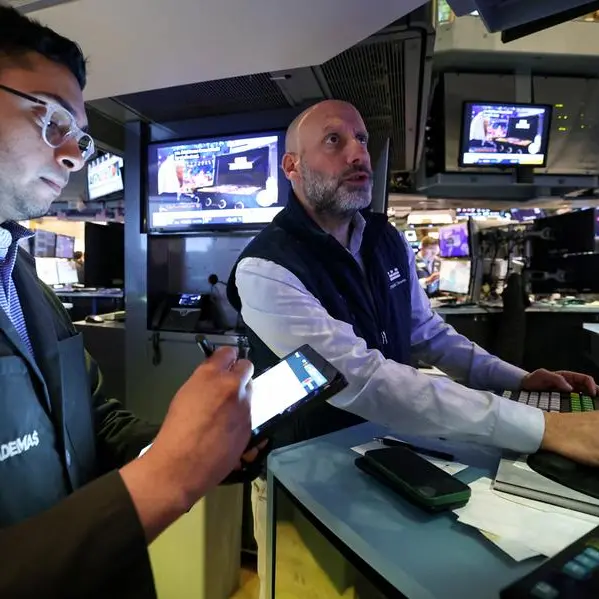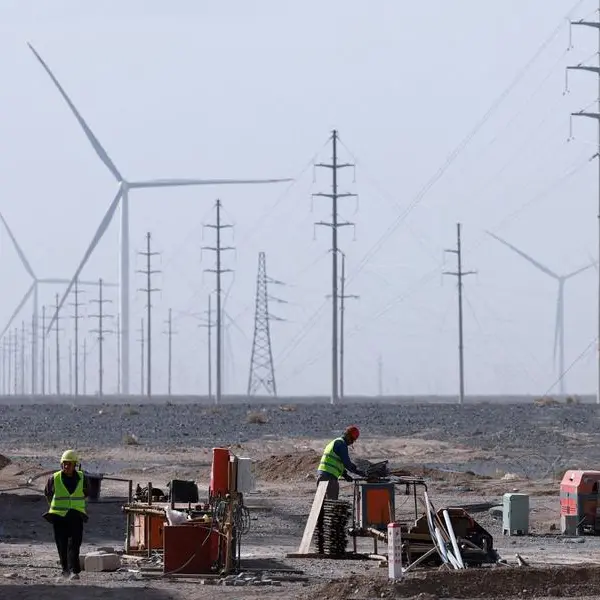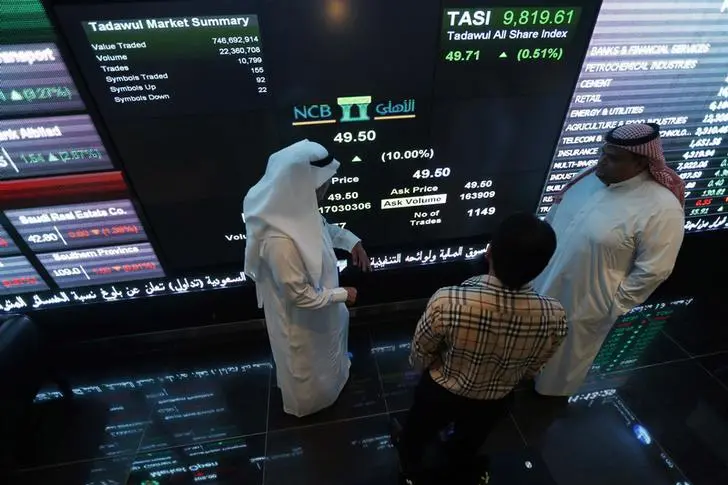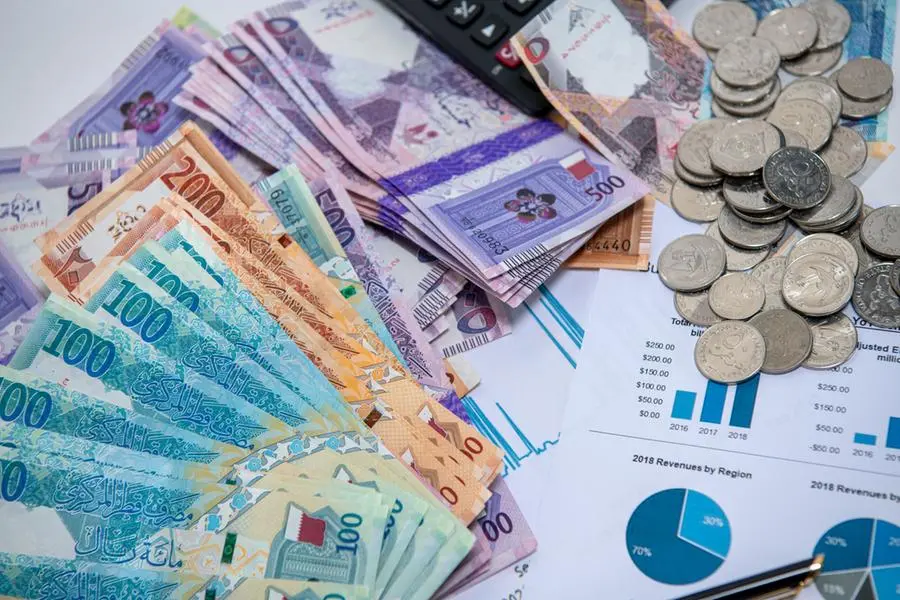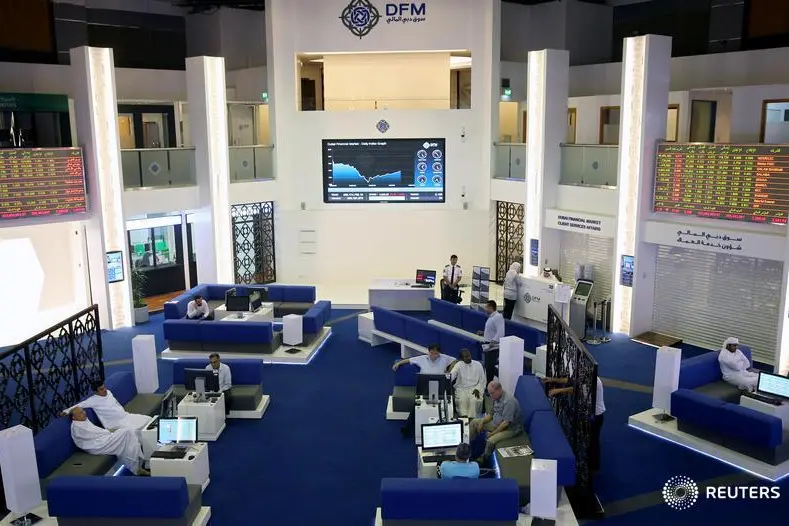PHOTO
Traders work on the floor at the New York Stock Exchange (NYSE) in New York City, U.S., March 26, 2025. REUTERS/Brendan McDermid.
LONDON - One of the scariest numbers in world finance got even more frightening at the end of last year as America's skyrocketing investment deficit hit new highs. Whether it's now peaked is perhaps the most important question facing global markets today.
The main thrust of President Donald Trump's global economic policies is clearly directed toward the U.S.'s yawning trade deficit, as he seeks to stop "freeloading" foreign countries from undercutting U.S. producers by overvaluing the dollar, frustrating U.S. exports and relying on American consumers.
Valid or not, next week's sweeping U.S. import tariff hikes are aimed at correcting that.
Less talked about is the accounting flipside of the U.S. trade and current account shortfalls: the country's massive capital surplus. America, with its large, liquid capital markets, effectively imports more of the world's savings than U.S. savers send abroad to Europe, Asia or the developing world.
Put another way, the U.S. Net International Investment Position (NIIP) - or the difference in value between overseas holdings of U.S. assets and all the assets held overseas by Americans - has been ballooning for more than a decade.
According to Wednesday's update from the U.S. Bureau of Economic Analysis, that NIIP gap hit yet another record high at the end of 2024: $26.2 trillion, a whopping 88% of annual U.S. GDP. While the bulk of that increase was driven by relative price effects, it also involved almost $1.3 trillion of additional net flows to the United States.
The NIIP has been inflated over the past decade not only by insatiable foreign appetite for U.S. stocks, bonds and real estate but also by the massive appreciation of those assets versus smaller gains in the rest of the world.
These stellar returns have, in turn, drawn ever more inflows in a virtuous loop, bolstered by the attraction of U.S. tech innovation alongside the traditional safe-haven allure of U.S. Treasuries.
And it's been these capital flows rather than the trade gap that have been chiefly responsible for dollar appreciation in the past decade. Reversing these flows could be painful for Americans as it could seriously undermine the asset price inflation that has supported and enriched many.
$30 TRILLION TSUNAMI
Under the hood, the numbers are even more eye-popping.
Total overseas holdings of U.S. assets - or America's overall liabilities to the rest of the world - increased by almost $8 trillion in the final quarter of last year to a gobsmacking $62.12 trillion. That's almost twice what it was a decade ago and nearly double the entire U.S. government debt pile.
And it was equities that were doing all the heavy lifting here, not U.S. debt prices that were going in the opposite direction. The value of portfolio equity and investment fund shares jumped by another $676 billion in the final quarter of 2024 to some $18.4 trillion.
Of course, this is all three months out of date, and we know what's happened since.
The early post-election euphoria around U.S. stocks wore off amid trade war angst, rising geopolitical tensions, surprising German and European defence-related fiscal stimulus and an artificial intelligence breakthrough in China.
The upshot has been that U.S. equities have underperformed the rest of the world by more than 10% in early 2025, having fallen behind European and German benchmarks by almost 20%. In turn, the dollar index has dropped by around 4% since the start of the year.
It will be another three months before we get the full NIIP data for this quarter, but these recent price impacts suggest that we may well see the first turn in the NIIP since the interest rate shocks of 2022.
Even though mutual fund data shows flows into U.S. equities held up reasonably well in the quarter despite Wall Street's price swoon, there was clearly greater demand for European and Asian stock funds.
Of course, there's always a chance that any turn in the U.S. investment deficit will be short-lived. The 2022 reversal lasted three quarters before the NIIP started truly exploding.
Next week's tariff announcements will clearly impact all of this and it's unclear what plans are actually coming.
What's not in doubt is the degree to which U.S. markets are knee-deep in foreign investment that's been increasingly in more volatile equities rather than traditionally stickier fixed income assets.
According to numbers compiled by Apollo Chief Economist Torsten Slok, some 60% of all foreign holdings of U.S. assets are now in equities compared to just 15% in Treasuries. Fifteen years ago, those equivalent shares were 33% and 22%, respectively.
If foreign money continues to turn tail, it could be a rough year ahead for Wall Street. If the NIIP has hit a historic peak, hold on to your hat. The opinions expressed here are those of the author, a columnist for Reuters
(By Mike Dolan; Editing by Jamie Freed)
Reuters
